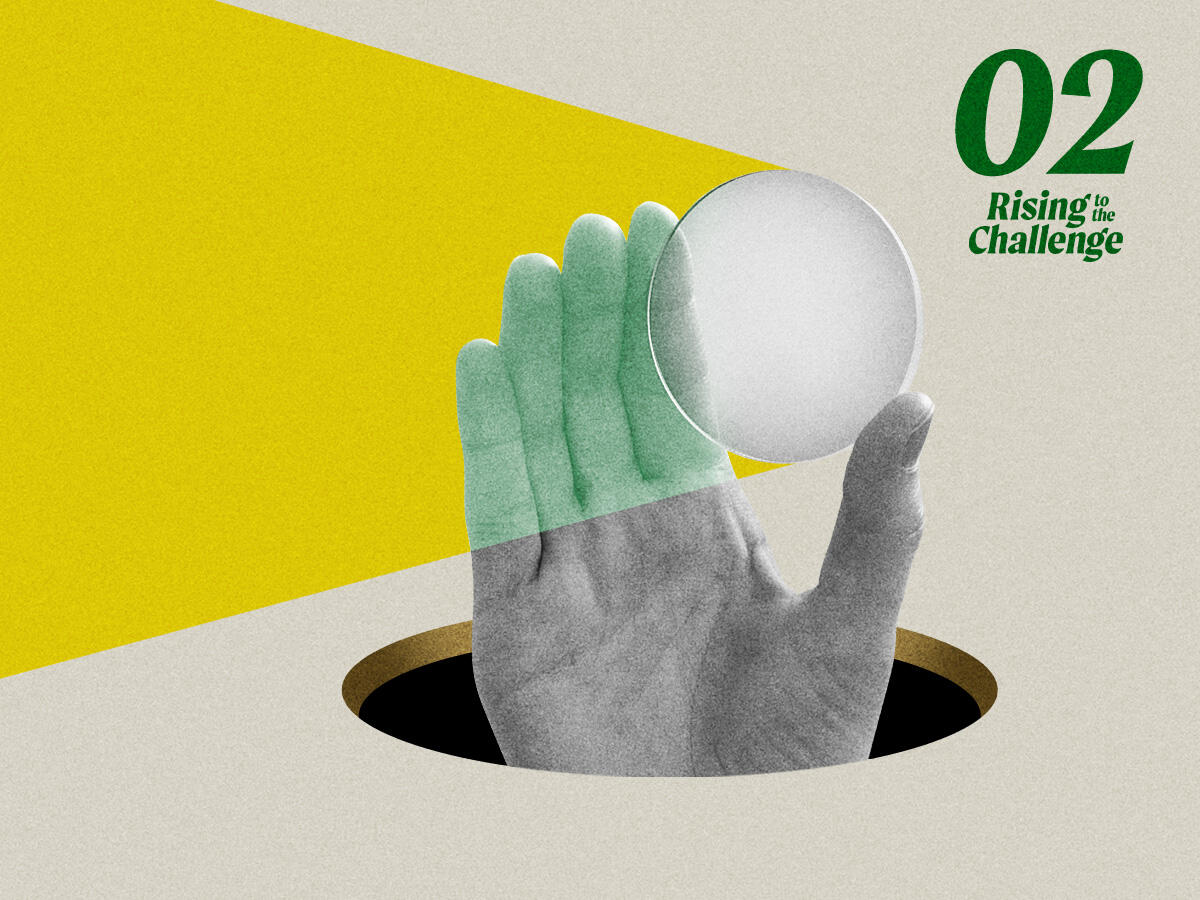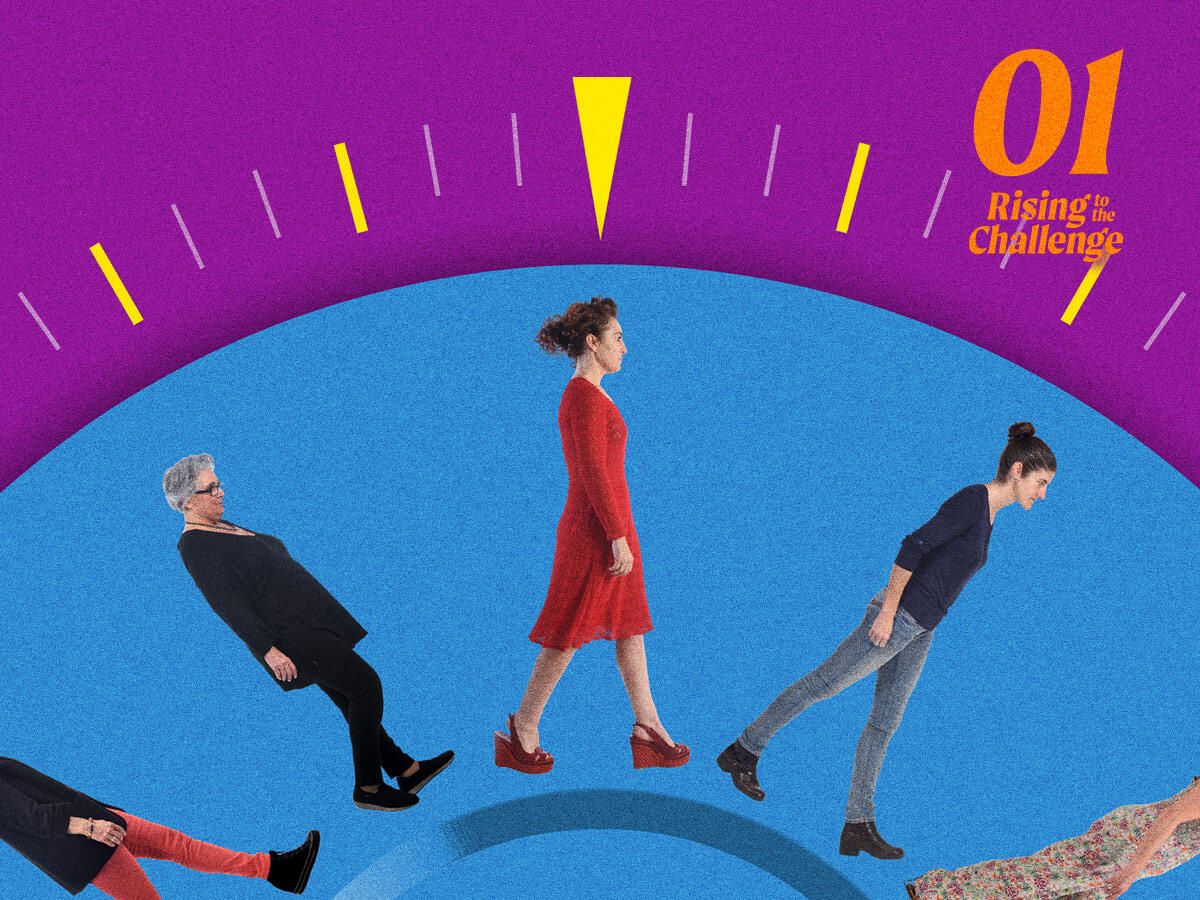Pursuing a universal concept of "ideal beauty"
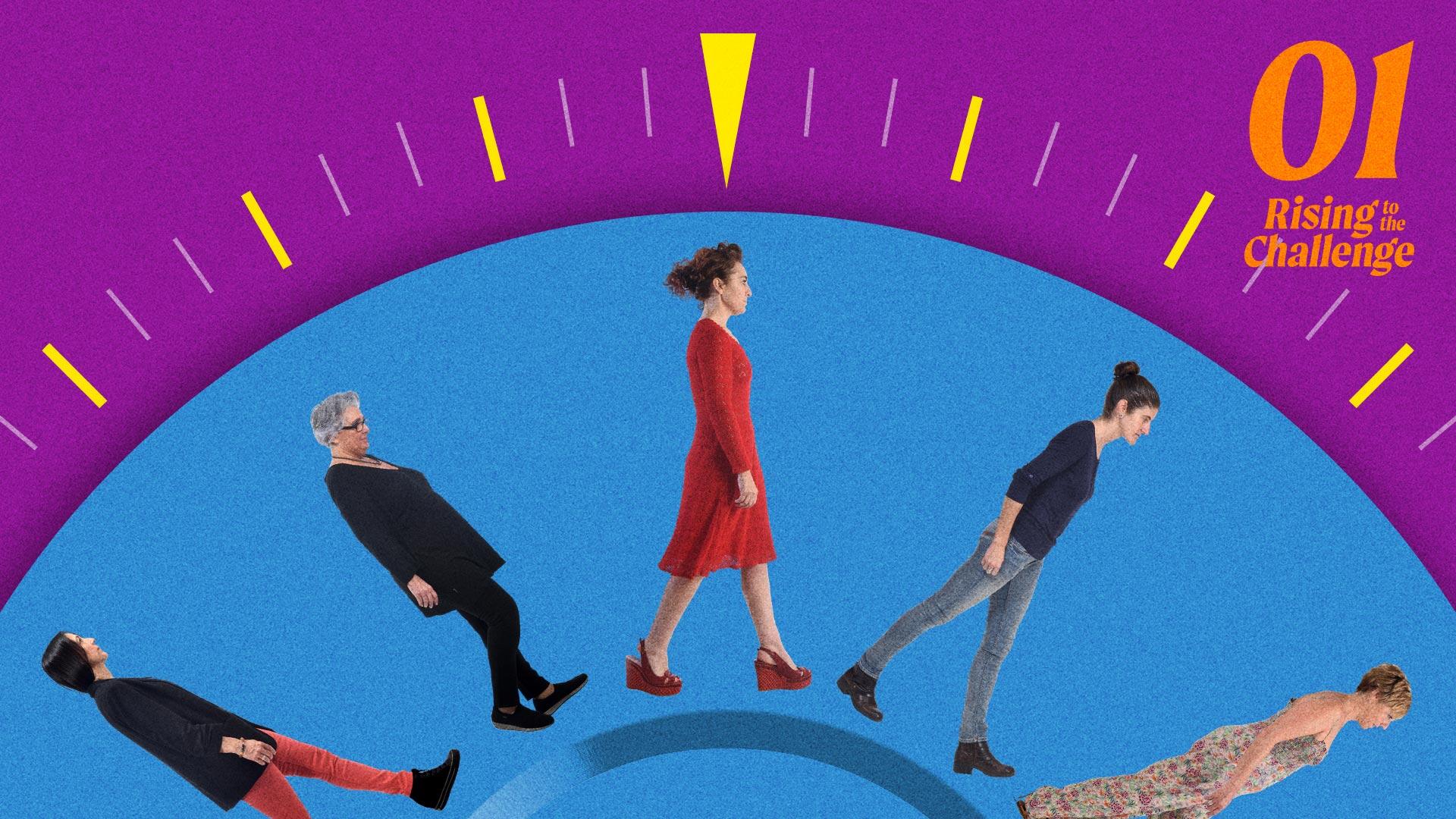
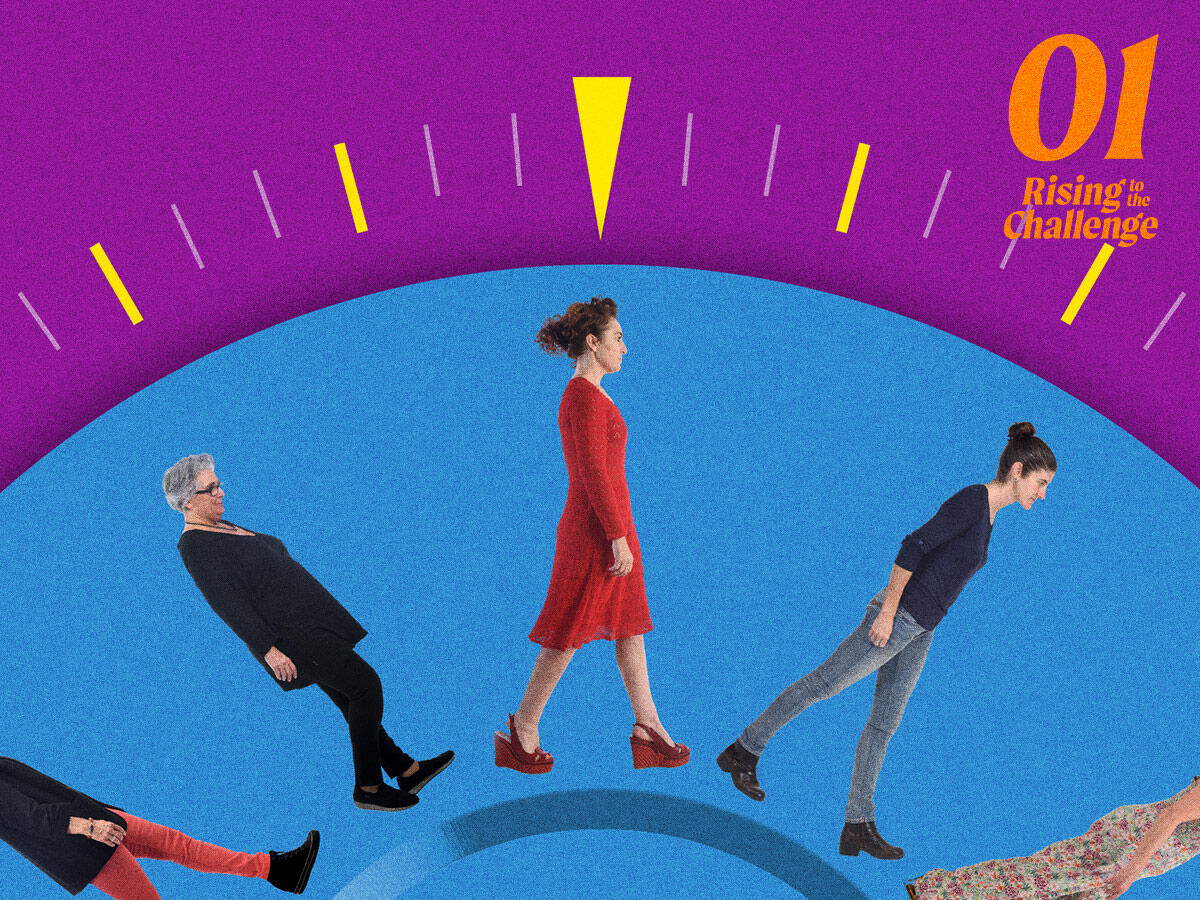
What exactly is the ideal way to walk? How do you formulate an abstract concept that each person senses differently? These were our major challenges. Clues were in the data. That’s what led us to develop the Walking Posture Check System, which utilizes sensing technology and gait analysis AI to identify the ideal walking style.
Clarifying an abstract concept with data.
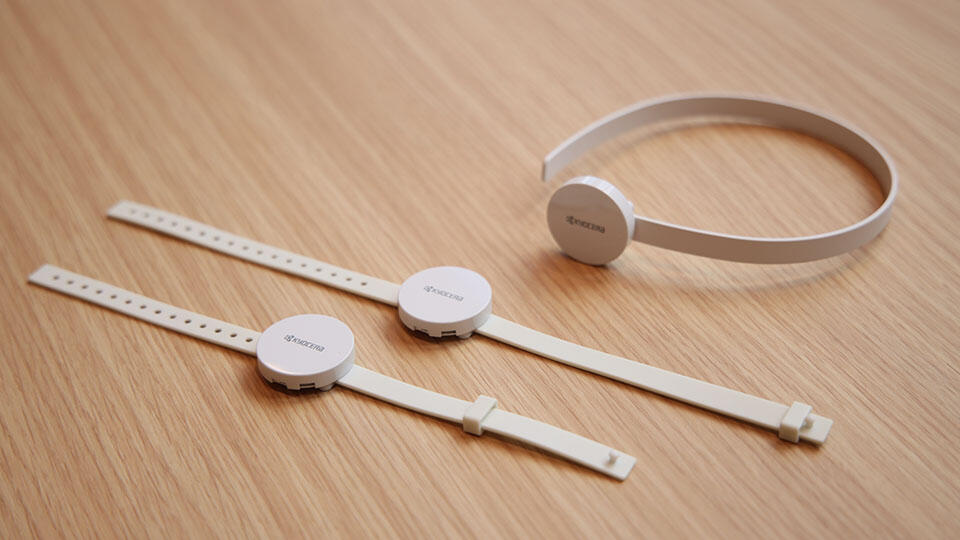
Kyocera's Future Design Research Laboratory aims to expand human capabilities through the seamless integration of people and technology. Here, a variety of research and development is underway to make everyday life more enjoyable and comfortable. The “Walking Posture Check System,” developed in collaboration with Japanese clothing manufacturer Wacoal Corporation, aimed to determine a universal image of the “ideal walking style,” not only in appearance but also in posture and movement. However, there is no absolute definition of walking style. The issues were highly abstract and difficult, and there was not even a clear process that could be followed to arrive at a solution. How might we use technology to objectively express the concept of “beauty” that each person has? Despite the simplicity of the theme “how to walk,” the challenges seemed to be piling up. Shiori Arimura, who was involved in the project, looks back on that time and says, “Quantifying concepts is not easy. But we believed there must be something we could determine from the data.”
In the past, Arimura worked in data science, using software and AI to approach issues such as improving internal operations and productivity. Drawing on her experience, she started by repeatedly mining and combining vast amounts of data, tirelessly searching for the feature value to express the impression of a person's walking style. As we progressed, we gradually began to see clues.
What success could mean:
- Research results, obtained while working with partners, could be widely reported by mainstream media to the public at large.
- The Future Design Research Laboratory could create representative case studies and build relationships with other companies.
- Application of the technology could spread to areas other than walking, such as medicine, sports, and entertainment.
Identifying “walk impressions” through diligent verification and analysis.
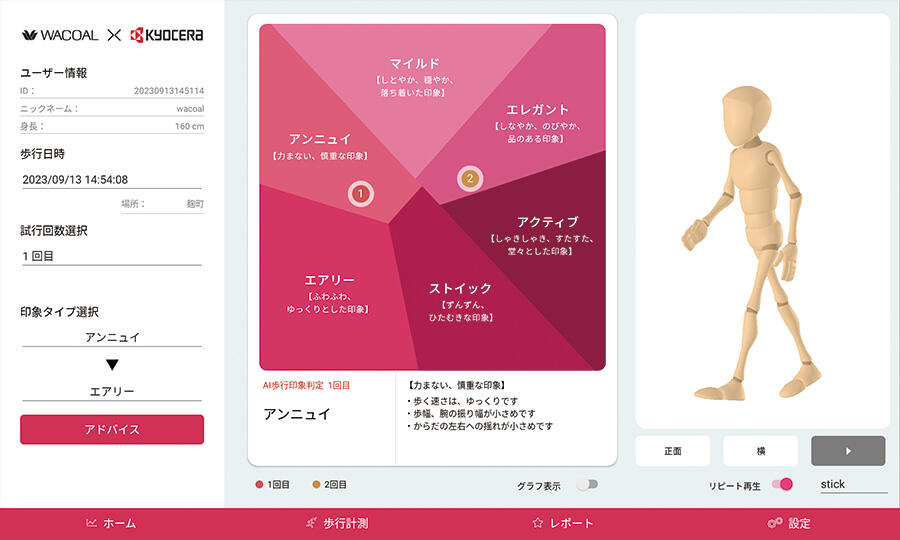
To find out what walking impressions existed, Wacoal, a Japanese company developing women’s fashion, first scored walking styles. Based on the scores, a principal component analysis (a method for summarizing large and disparate datasets to capture essential components) was conducted. The way each subject walked was plotted on a two-dimensional plane. Based on Wacoal's know-how, a clustering of qualities, such as “elegant” and “active,” was performed within a certain range. Threshold values were set to serve as boundaries for state changes. From there, Arimura was able to classify six impression types based on the values from sensors worn by people while walking. The process took about two years, with more than 200 people collecting and analyzing the data. Thanks to their hard work, we succeeded in developing an algorithm that quantifies and evaluates sensitivity and impressions to extract features. Eventually, Wacoal launched a service for customers to identify their style by simply walking 10 meters while wearing three sensors. Data from the sensors reveals points that help customers get closer to the impression they want to achieve.
* Walk analysis map (pictured above) app is currently only available in Japanese.
Wacoal: Foot Concierge
https://store.wacoal.jp/topics/brand/foot_concierge.html (Japanese)
A message to engineers / What I have learned and earned
To be honest, when I first heard that AI would be used to evaluate walking styles and impressions, I was worried. Is that even possible? I remember that I had a hard time communicating my thoughts and ideas as I searched for an answer to the question, “What is an ideal walk?” However, being pessimistic doesn’t help anyone. I believe that if you have a positive outlook, you will have a positive impact on yourself and those around you. And, no doubt, that will bring you closer to success.
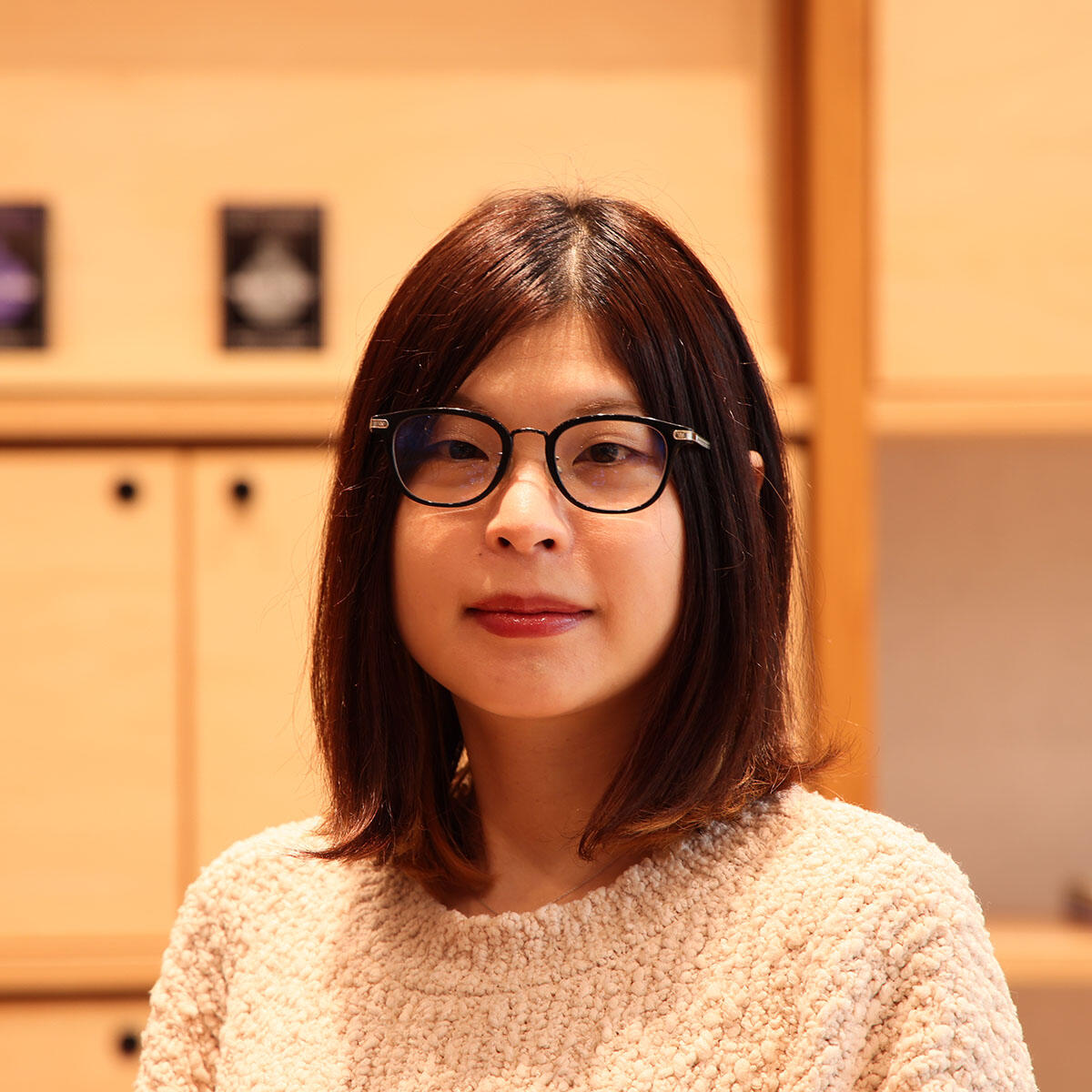
Shiori Arimura
KYOCERA Corporation, Future Design Research Laboratory, Corporate R&D Group
Through research and development using motion sensing technology, the company aims to bring more value to daily life as well as enhancement of applications in sports, entertainment, and other fields.
Articles in the same series
Latest Articles
-
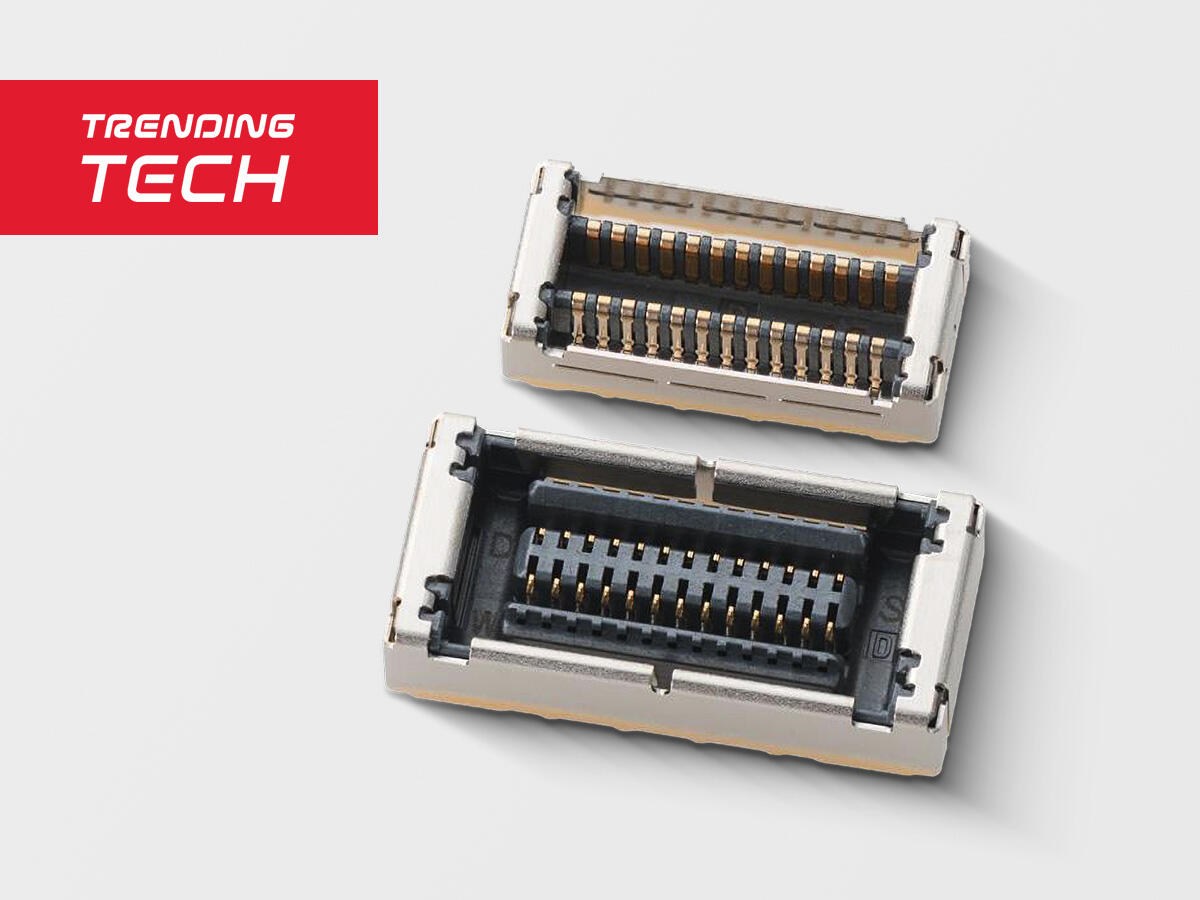
TRENDING TECH
New pitch board to board connector “5908 Series”
-
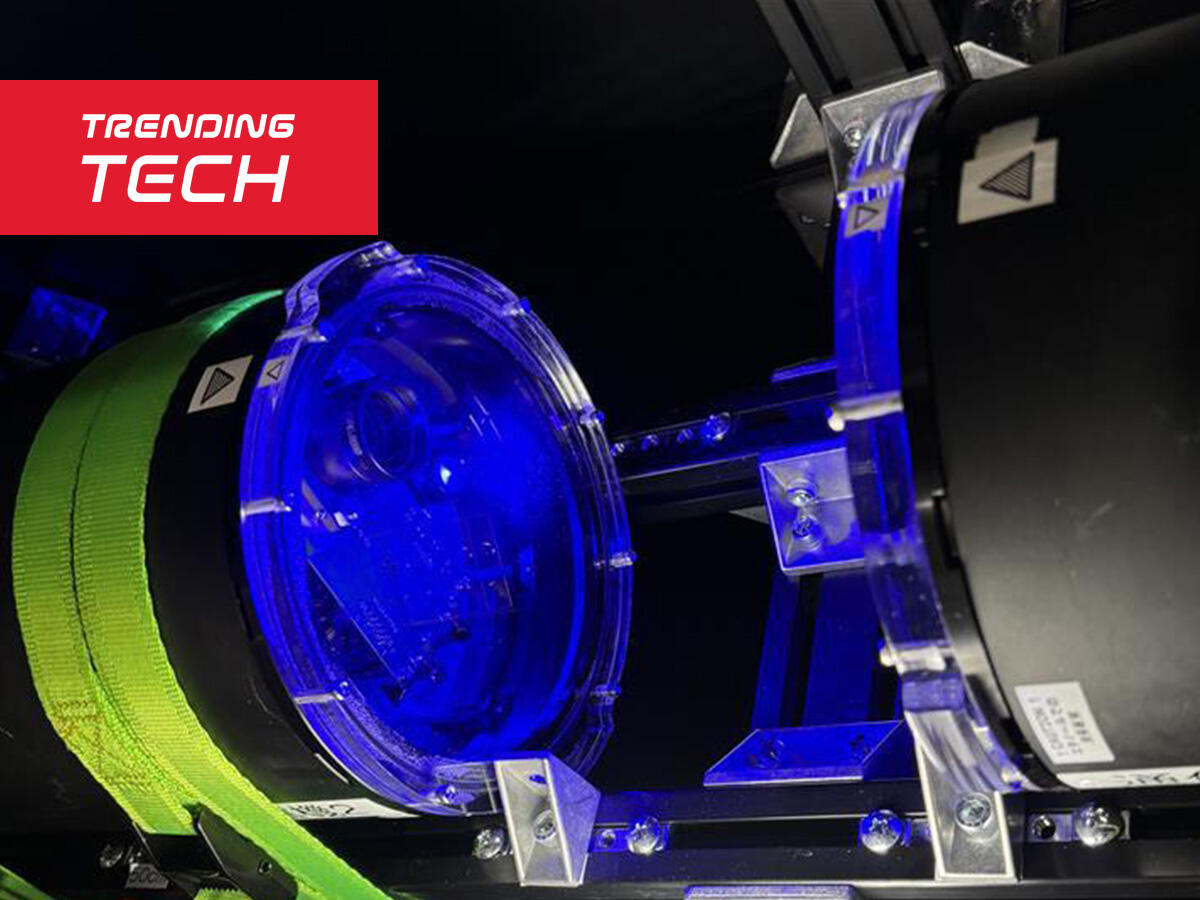
TRENDING TECH
The Next Frontier in Data Transfer
-
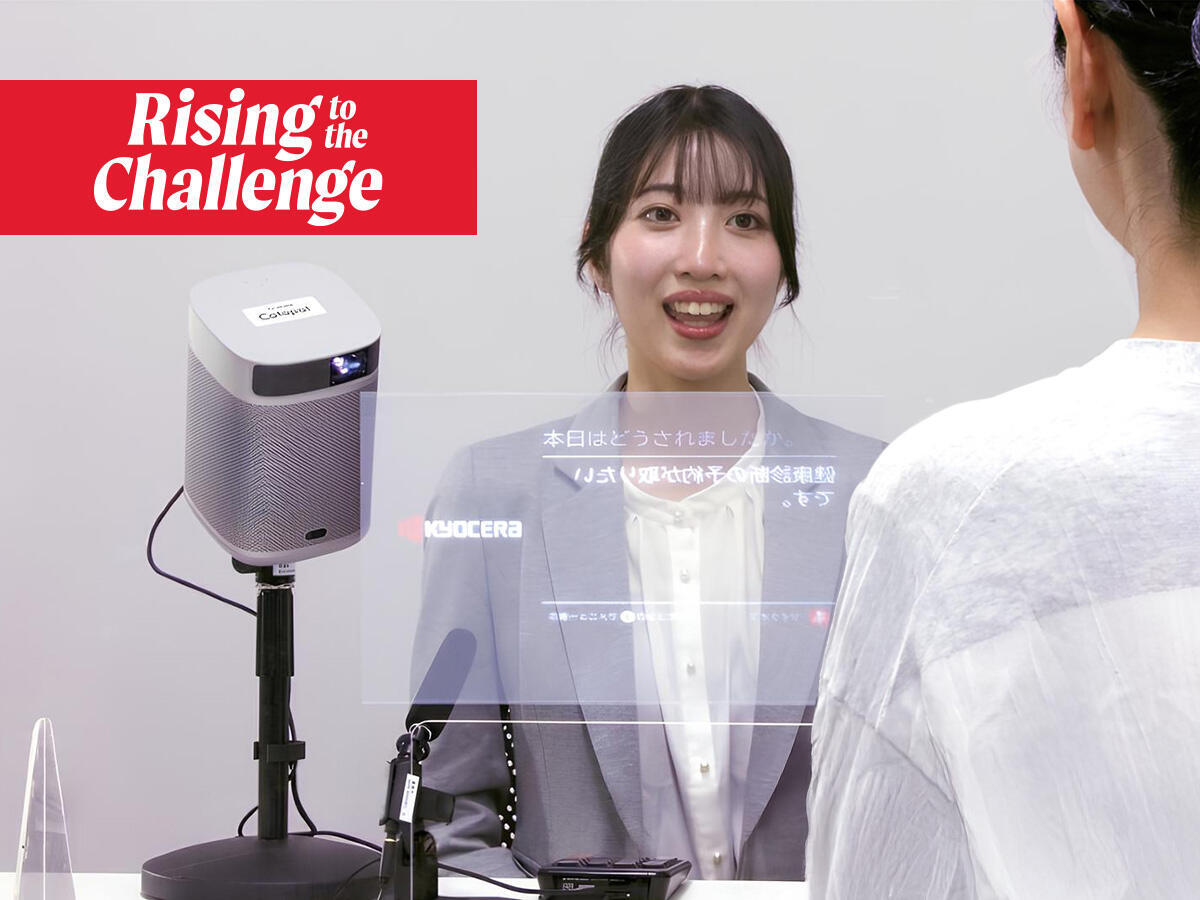
RISING TO THE CHALLENGE
Cotopat’s Market Success Driven by Rigorous Testing and Team Collaboration
-
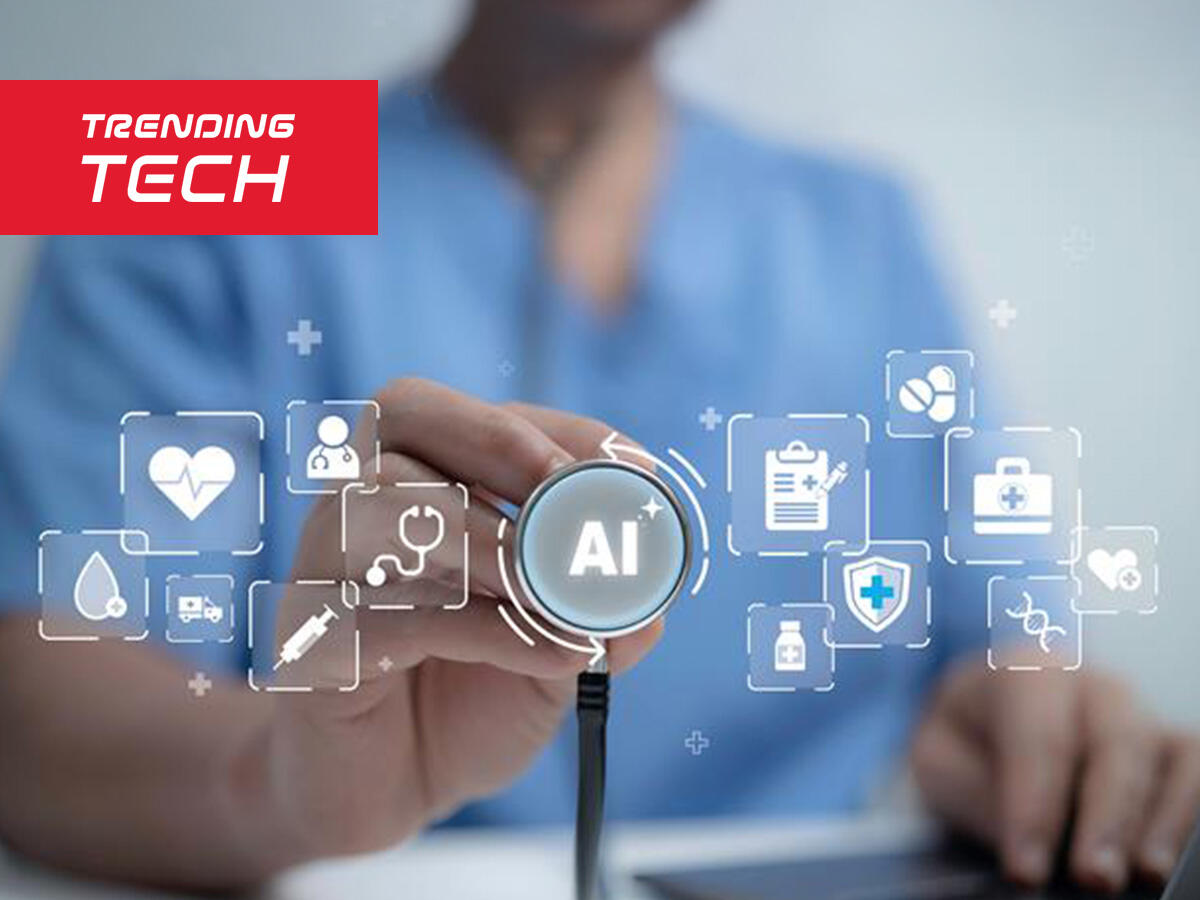
TRENDING TECH
AI Meets Legacy Systems – A Partnership to Watch
-
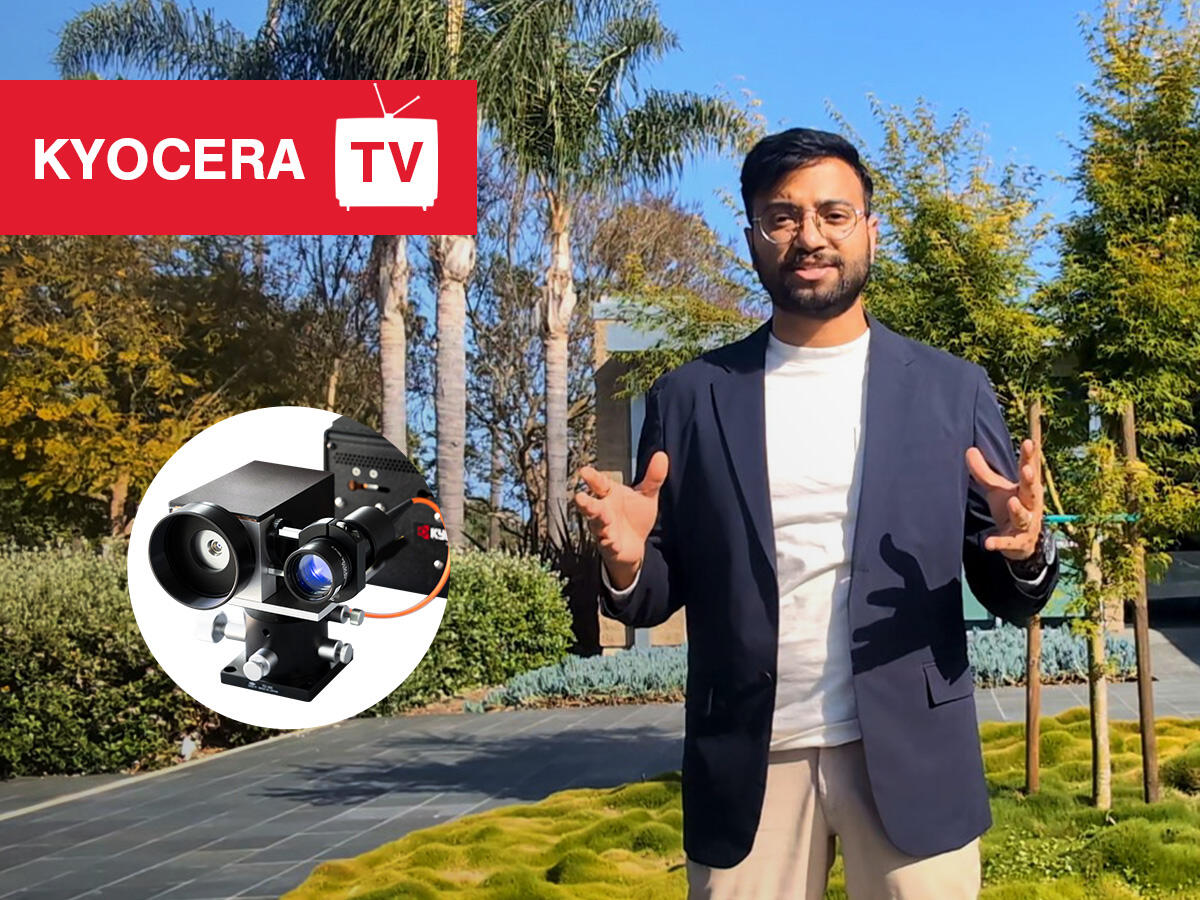
KYOCERA TV
Kyocera Teaches: What is LiFi?
-
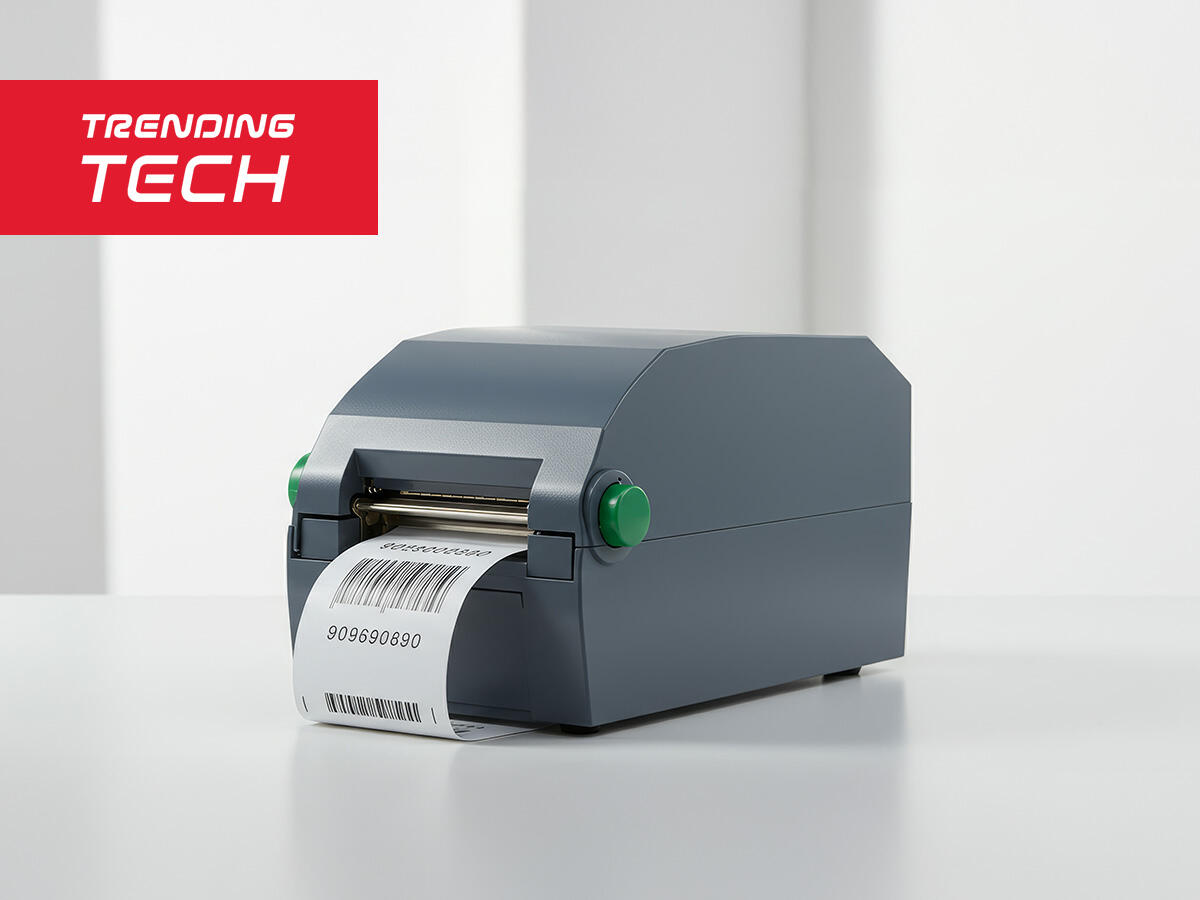
TRENDING TECH
Print Like Never Before: Kyocera Unveils 'TPA Series' Thermal Printhead for Stunning Quality

